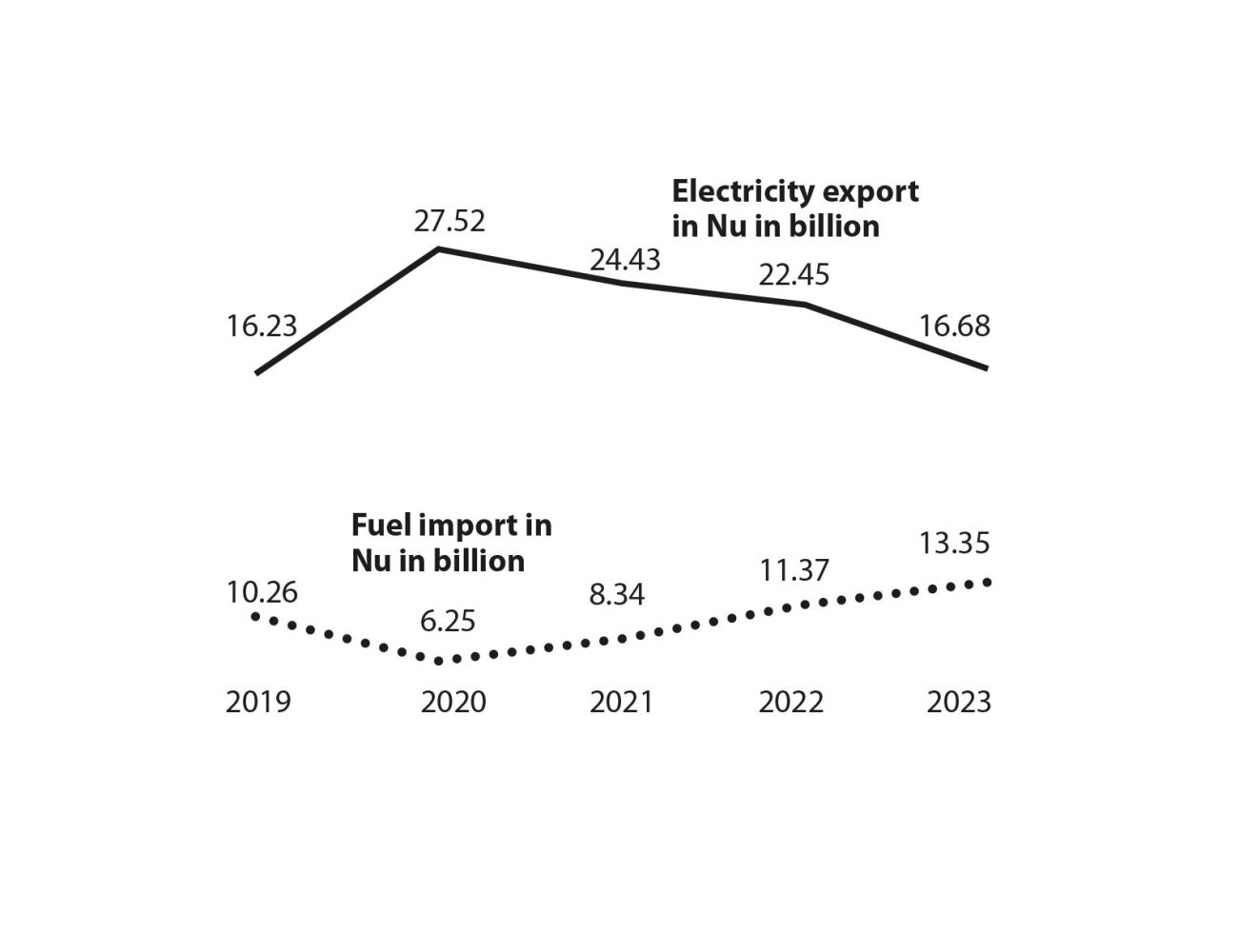
Bhutan faces a pressing concern: while the import of fuel skyrockets, the export of electricity dwindles. This is a troubling picture of the nation’s economic landscape.
According to trade statistics, fuel import—a key import commodity—surged from Nu 11.37 billion in 2022 to Nu 13.35 billion in the past year, indicating a significant uptick.
This contrasts sharply with previous years, where imports stood at Nu 10.26 billion in 2019.
The onset of the pandemic led to a temporary dip in imports, with figures dropping to Nu 6.25 billion in 2020, and Nu 8.34 billion in 2021.
Conversely, the export of electricity shows a serious decline, plummeting from Nu 22.48 billion in 2022 to Nu 16.68 billion last year.
This downward trend is evident, notably with the country exporting Nu 27.52 billion worth of electricity to India in 2020, reflecting a stark decrease.
Why?
The surge in fuel imports can be attributed to the burgeoning number of vehicles and ongoing infrastructure projects nationwide, as noted by an official from the Department of Trade.
Vehicle registrations have soared from 75,190 in 2014 to 125,534 in 2022, according to the 2022 annual report of Bhutan Construction and Transport Authority.
The rise in the taxi fleet, from 4,851 in 2019 to 6,489 in June last year, further validates this trend.
Despite the inauguration of the 720 MW Mangdechhu hydroelectric project in 2019, revenue from electricity export has plummeted.
Export sales witnessed a staggering 26.7 percent decline, primarily due to the surge in domestic demand for electricity, which soared by 98 percent last year.
Additionally, hydropower generation saw a marginal 2 percent drop last year compared to the previous year.
The decline in revenue is exacerbated by the fact that export tariffs surpass domestic generation tariffs, resulting in an overall downturn in revenues for Druk Green Power Corporation and the power plants.
The country’s power exports peaked at 9,259.7 GWh in 2020, only to decline to 8,075.5 GWh in 2021, and further to 7,240.2 GWh in 2022, signaling a concerning pattern.
Similarly, electricity consumption has witnessed a remarkable surge from 0.06 GWh in 2014 to 0.57 GWh in 2022. Industrial electricity consumption has notably escalated from 1,593 GWh in 2014 to 2,859.51 GWh in 2022, with the lion’s share going to HV industries, accounting for 91.7 percent of the total.
This rapid growth rate in electricity demand underscores the urgent need to address the country’s energy dynamics to ensure sustainable development and economic stability.












